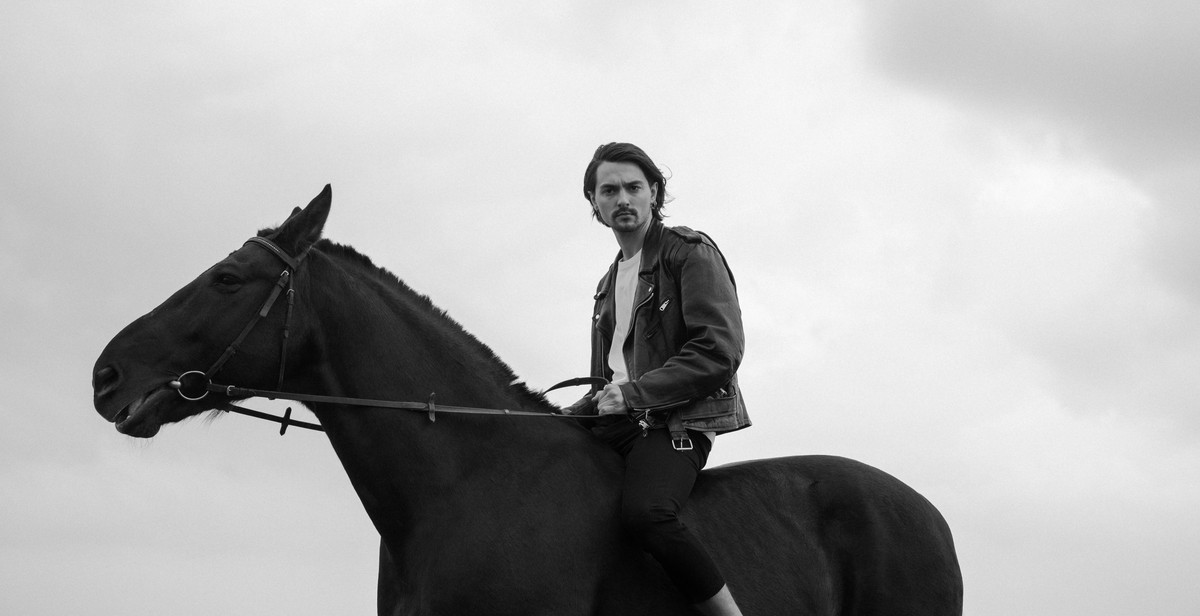How to Start a Horseback Riding Lesson Program: Steps to Establish
Starting a horseback riding lesson program can be a fulfilling and profitable venture for those who are passionate about horses and teaching others how to ride. However, establishing a successful horseback riding lesson program requires careful planning, preparation, and execution.
Step 1: Develop a Business Plan
Before starting any business, it is crucial to create a comprehensive business plan that outlines your goals, target market, competition, marketing strategies, and financial projections. This will help you identify potential challenges and opportunities, and ensure that you have a solid foundation for your horseback riding lesson program.
Step 2: Obtain Necessary Licenses and Permits
Depending on your location, you may need to obtain various licenses and permits to operate your horseback riding lesson program. This may include a business license, zoning permit, liability insurance, and certifications from professional organizations.
Step 3: Acquire Suitable Horses and Equipment
The success of your horseback riding lesson program depends on having well-trained horses and suitable equipment, including saddles, bridles, helmets, and grooming supplies. It is essential to invest in high-quality equipment that is safe and comfortable for both horses and riders.
Step 4: Hire Qualified Instructors
To provide excellent horseback riding lessons, you need to hire qualified and experienced instructors who have a passion for teaching and a deep understanding of horses. You can recruit instructors through professional networks, job postings, and referrals.
By following these steps, you can establish a successful horseback riding lesson program that provides riders with a safe, enjoyable, and educational experience.
Step 1: Determine Your Goals
Starting a horseback riding lesson program can be an exciting and rewarding venture, but before you begin, it’s important to determine your goals. Knowing what kind of riding program you want to offer, who your target audience is, and what your financial goals are will help you establish a strong foundation for your business.
What Kind of Riding Program Do You Want to Offer?
There are many different types of horseback riding programs, from recreational trail riding to competitive show jumping. Consider your own experience and expertise in the industry, as well as the resources available to you, when deciding what kind of program to offer. You may also want to research the local market to see what kind of programs are in demand in your area.
Who is Your Target Audience?
Identifying your target audience will help you tailor your program to meet their needs and preferences. Are you targeting children or adults? Beginners or experienced riders? Leisure riders or competitive athletes? Understanding your audience will also help you develop effective marketing strategies.
What are Your Financial Goals?
Establishing your financial goals will help you determine the pricing for your program and the number of clients you need to attract to meet your revenue targets. Consider the costs associated with running your program, such as horse care, facility maintenance, and insurance, when setting your pricing.
- Decide what kind of riding program you want to offer
- Identify your target audience
- Establish your financial goals
By answering these key questions, you’ll be able to establish a clear vision for your horseback riding lesson program and set yourself up for success.
Step 2: Develop a Business Plan
Developing a comprehensive business plan is crucial to the success of your horseback riding lesson program. This plan should include a budget, pricing strategy, location, and policies and procedures.
Create a Budget
Creating a budget is essential for any business, including a horseback riding lesson program. Consider all the expenses associated with running your program, such as horse care, equipment, insurance, and marketing. Determine how much revenue you need to generate to cover your costs and make a profit. It’s important to be realistic and conservative when creating your budget.
Determine Pricing
When determining pricing for your horseback riding lessons, consider your target market and the prices of other lesson programs in your area. You may want to offer discounts for group lessons or package deals. It’s important to set prices that are competitive but also allow you to make a profit.
Decide on a Location
Choosing a location for your horseback riding lesson program is crucial. Look for a location that is easily accessible and has enough space to accommodate your horses and clients. Consider the cost of rent or mortgage and any necessary renovations or improvements to the property.
Establish Policies and Procedures
Establishing policies and procedures is essential for the safety and success of your horseback riding lesson program. Develop policies around horse care, rider safety, and lesson scheduling. It’s important to communicate these policies clearly to your clients and ensure they are followed consistently.
| Tasks | Details |
|---|---|
| Create a budget | Consider all expenses associated with running your program and determine how much revenue you need to generate to cover your costs and make a profit. |
| Determine pricing | Consider your target market and the prices of other lesson programs in your area. Set prices that are competitive but also allow you to make a profit. |
| Decide on a location | Look for a location that is easily accessible and has enough space to accommodate your horses and clients. Consider the cost of rent or mortgage and any necessary renovations or improvements to the property. |
| Establish policies and procedures | Develop policies around horse care, rider safety, and lesson scheduling. Communicate these policies clearly to your clients and ensure they are followed consistently. |

Step 3: Acquire Necessary Equipment and Resources
Starting a horseback riding lesson program requires a significant investment in equipment and resources. Here are the essential items you will need:
Horses
The most crucial aspect of your horseback riding lesson program is the horses. You need to have a sufficient number of well-trained horses to accommodate your students. Acquiring horses can be a significant expense, so consider leasing or partnering with other stables to keep costs down. When selecting horses, consider their temperament, size, and training level.
Tack and Equipment
Along with horses, you will need to have appropriate tack and equipment to ensure the safety of your riders. This includes saddles, bridles, helmets, boots, and other protective gear. Be sure to invest in high-quality, durable equipment that can withstand daily use and frequent cleaning.
Facility and Landscaping
The facility and landscaping are also essential components of your horseback riding lesson program. You will need to have a safe and functional riding arena, as well as a barn or stable for housing your horses. Consider investing in landscaping to create a beautiful and inviting environment for your students.
| Item | Quantity | Estimated Cost |
|---|---|---|
| Horses | Varies (depending on class size) | $5,000-$10,000 per horse |
| Tack and Equipment | Varies (depending on class size) | $500-$1,000 per rider |
| Facility and Landscaping | Varies (depending on size of facility) | $50,000-$100,000+ |
Overall, starting a horseback riding lesson program requires a significant investment in equipment and resources. However, by acquiring the necessary items and creating a safe and inviting environment, you can provide an excellent experience for your students and establish a successful program.

Step 4: Hire Staff and Instructors
Building a successful horseback riding lesson program requires a team of qualified staff and instructors. Here are some steps to follow when hiring staff and instructors for your program:
Determine Staffing Needs
Before advertising for instructors, you need to determine your staffing needs. Consider the size of your program and the number of lessons you plan to offer. You may need additional staff members to help with horse care, stable management, and administrative tasks.
Advertise for Instructors
Advertise for instructors through various channels, such as social media, job boards, and local equestrian associations. Clearly state your program’s requirements, such as certification and experience level, in your job postings.
Conduct Interviews and Background Checks
Conduct interviews to assess candidates’ qualifications and personalities. Ask questions about their teaching style, experience working with horses and students, and their availability. Additionally, conduct background checks to ensure the safety of your students and the reputation of your program.
Overall, hiring qualified staff and instructors is crucial to the success of your horseback riding lesson program. Take the time to find the right team members who will help create a positive and safe learning environment for your students.
Step 5: Create Lesson Plans and Curriculum
Developing a lesson plan format and creating a curriculum for your horseback riding lesson program is crucial to ensure that your students learn effectively and safely. Here are some tips to help you:
Lesson Plan Format
When developing your lesson plan format, make sure to include the following:
- Goals and objectives for each lesson
- Activities and exercises to achieve those goals
- Equipment and supplies needed
- Assessment and evaluation methods
Curriculum for Beginner, Intermediate, and Advanced Riders
Create a curriculum that is tailored to the needs and skill levels of your students. Here are some suggestions:
| Beginner | Intermediate | Advanced |
|---|---|---|
| Mounting and dismounting | Jumping techniques | Advanced dressage movements |
| Basic riding position | Flatwork exercises | Jumping courses |
| Basic steering and control | Basic jumping | Showing and competition preparation |
Safety Guidelines
Safety should be your top priority when teaching horseback riding lessons. Make sure to incorporate the following safety guidelines:
- Students must wear appropriate safety gear, including helmets and boots with heels
- Teach students how to approach and handle horses safely
- Ensure that all equipment is in good condition and properly fitted to each student
- Monitor students closely during lessons and adjust activities as needed
By following these tips, you can create effective lesson plans and a comprehensive curriculum that will help your students learn and grow as riders while prioritizing their safety.

Step 6: Promote Your Program
Creating a horseback riding lesson program is just the first step in your journey as a riding instructor. To ensure that your program reaches its full potential, you need to promote it effectively. Here are some ways to promote your program:
Create a Website and Social Media Presence
Creating a website for your program is a great way to reach out to potential clients. Your website should have information about your program, including the types of lessons you offer, the price of each lesson, and your contact information. You can also include pictures and videos of your horses and riders to give potential clients an idea of what to expect. Additionally, you should create social media accounts for your program. Facebook, Instagram, and Twitter are great platforms to reach out to potential clients and keep them updated on your program.
Offer Promotional Deals
Offering promotional deals is a great way to attract new clients to your program. You can offer discounts to first-time riders or group discounts for families or friends who sign up together. Additionally, you can offer seasonal promotions, such as discounts during the summer months or holiday specials.
Participate in Local Events and Sponsorships
Participating in local events and sponsorships is a great way to get your program’s name out there. You can participate in horse shows, parades, and other local events to showcase your horses and riders. Additionally, you can sponsor local sports teams or events to get your program’s name in front of a wider audience.
By following these steps, you can effectively promote your horseback riding lesson program and attract new clients.
Conclusion
Starting a horseback riding lesson program can be a challenging yet rewarding experience. By following the steps outlined in this article, you can establish a successful program that provides safe and enjoyable riding experiences for your students.
Remember to start by conducting thorough research on the industry, including safety standards and regulations. Develop a business plan and secure funding to ensure the success and sustainability of your program.
Invest in quality horses and equipment, and hire experienced instructors who can provide excellent riding instruction and customer service.
Marketing your program is also crucial to its success. Utilize social media, word-of-mouth, and partnerships with local businesses to spread the word about your program and attract new students.
Finally, prioritize safety and maintain a positive and welcoming environment for all students. By following these steps and staying committed to your program’s success, you can create a thriving horseback riding lesson program that benefits both you and your students.
| Step | Description |
| Step 1 | Conduct thorough research on the industry, including safety standards and regulations. |
| Step 2 | Develop a business plan and secure funding to ensure the success and sustainability of your program. |
| Step 3 | Invest in quality horses and equipment, and hire experienced instructors who can provide excellent riding instruction and customer service. |
| Step 4 | Market your program effectively using social media, word-of-mouth, and partnerships with local businesses. |
| Step 5 | Prioritize safety and maintain a positive and welcoming environment for all students. |
